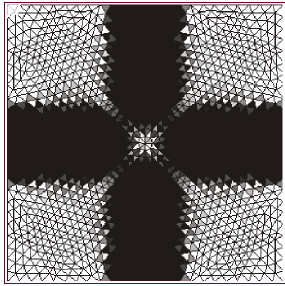
Lecture 2
Shapes and geometries
as
design, optimization, or control variables
Michel Delfour, FRSC
and
Département de Mathématiques et de Statistique
Université de Montréal
Montréal, Canada

Abstract
This lecture will provide an overview of recent
results on the handling of the geometry as a modeling, optimization, or
control variable with illustrative examples and applications. The
increased interest in theoretical studies in this general area are
motivated by numerous technological developments or phenomenological
studies and the fact that such problems are quite different from their
analogues involving only vectors of scalars or functions. Special tools
and constructions are definitely required. In the past few decades the
mathematical and computational communities have made considerable
contributions to this general area of activity by nicely intertwining
theoretical and numerical methods from optimal design, control theory,
optimization, geometry, partial differential equations, free and moving
boundary problems, and image processing.
In that context, a good analytical framework and good modeling
techniques must be able to handle the mechanics, the physics, or the
engineering of the problems at hand. Many basic mathematical ideas and
methods have come from very different areas of applications and
mathematical activities that have traditionally evolved in parallel
directions. This field of research has been steadily broadening because
it touches on areas that include classical geometry, modern partial
differential equations, geometric measure theory, topological groups,
constrained optimization, with applications to classical mechanics of
continuous media such as fluid mechanics, elasticity theory, fracture
theory, modern theories of optimal design, optimal location and shape
of geometric objects, free and moving boundary problems, image
processing.
Original issues raised in some applications have forced a new look at
the fundamentals of well-established mathematical areas such as
boundary value problems, to find suitable relaxation of solutions, or
geometry, to relax the basic notions of volume, perimeter, and
curvature. In that context Henri Lebesgue was certainly a pioneer when
in 1907 he relaxed the intuitive notion of volume to the one of
measure on an equivalence class of measurable sets. He
was followed in that spirit in the early fifties by the celebrated work
of E. De Giorgi who used the relaxed notion of finite perimeter
defined on the class of Caccioppoli sets to solve Plateau's
problem of minimal surfaces. This school of thoughts known as geometric
measure theory considerably expanded under the impulsion and influence
of pioneers such as H. Federer.
Reference
M. C. Delfour and J.-P. Zolésio, Shapes and Geometries: Analysis, Differential Calculus and Optimization, SIAM series on Advances in Design and Control, Society for Industrial and Applied Mathematics, Philadelphia, USA 2001.